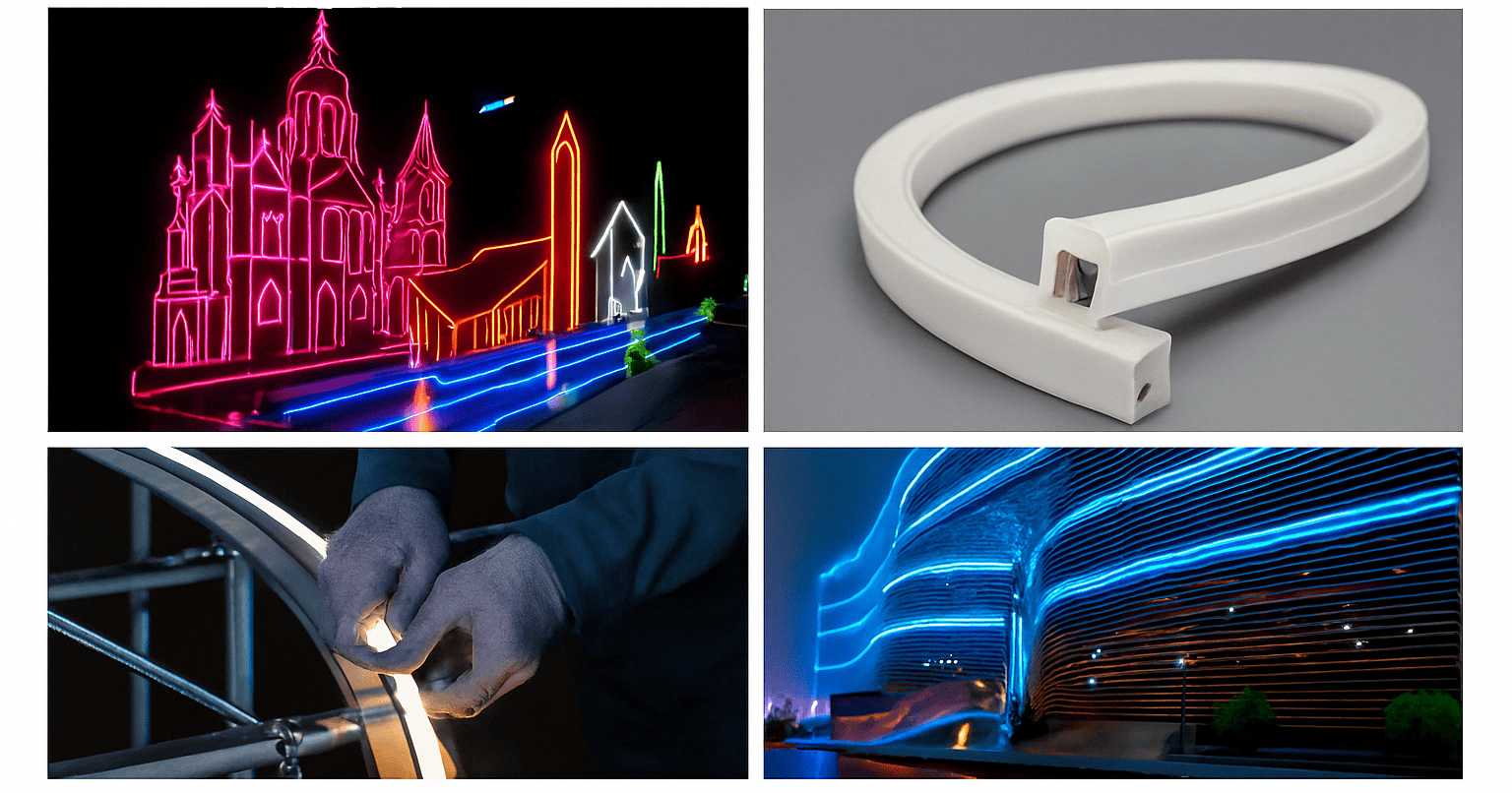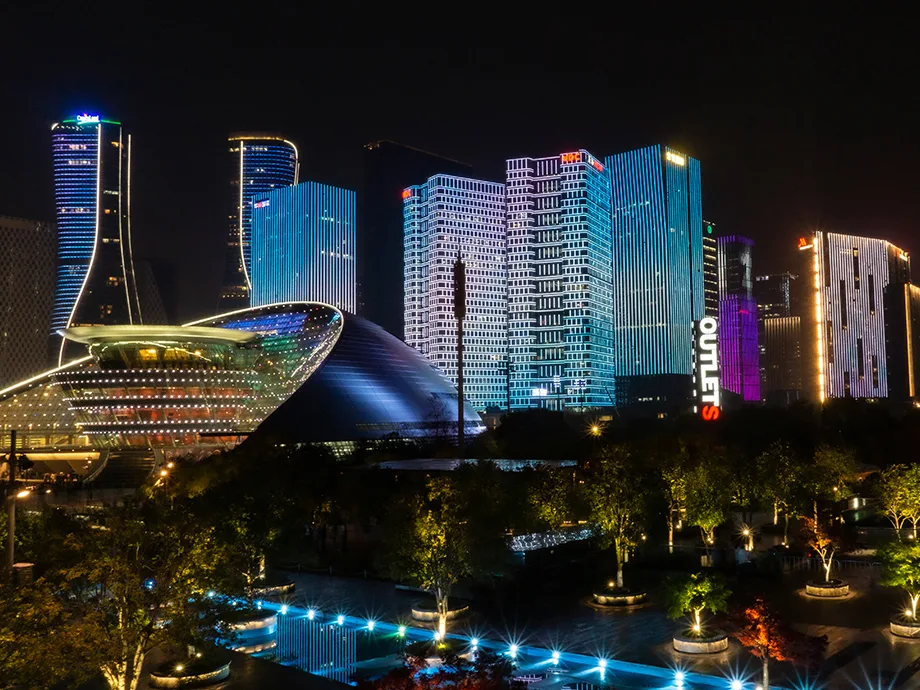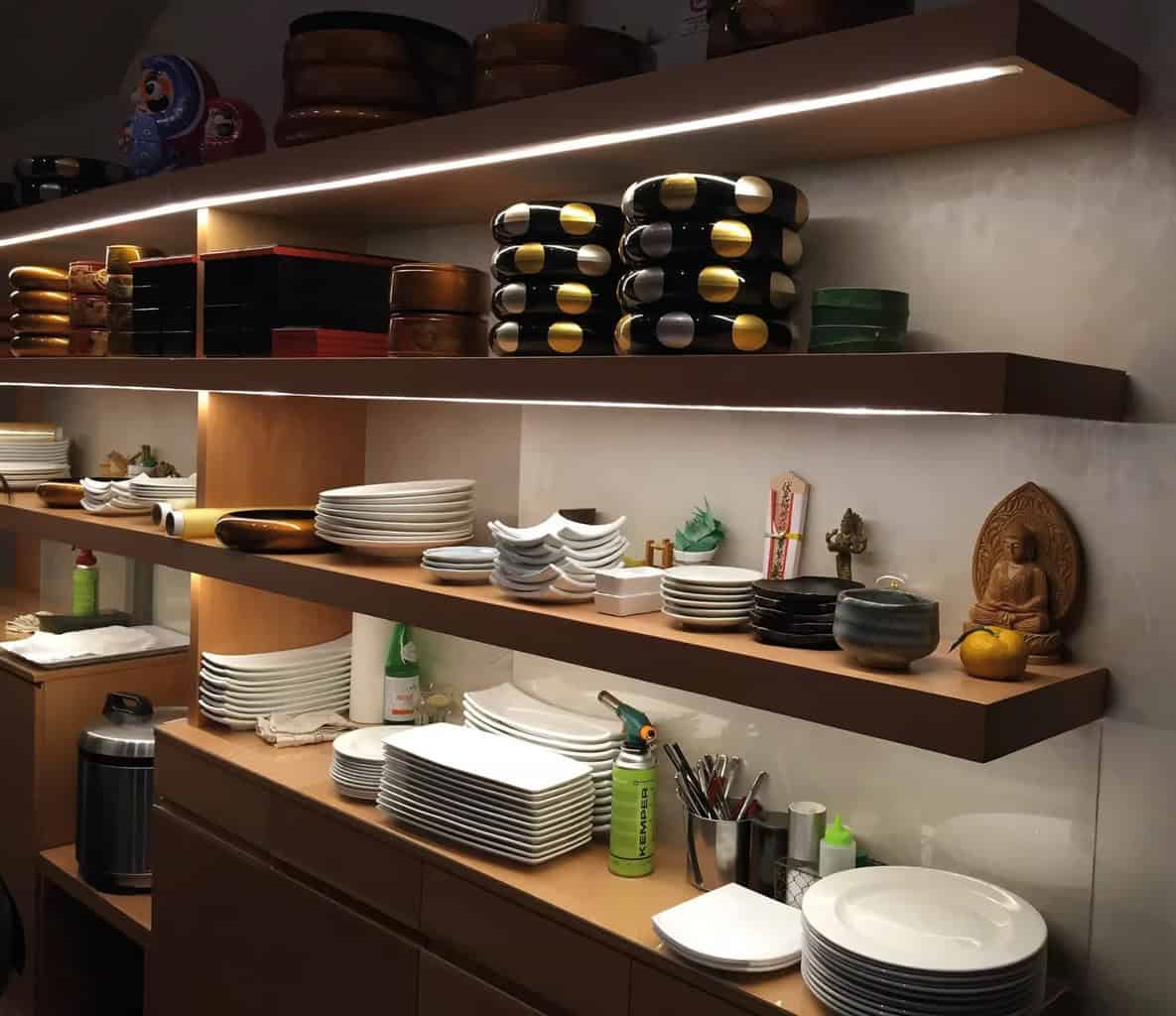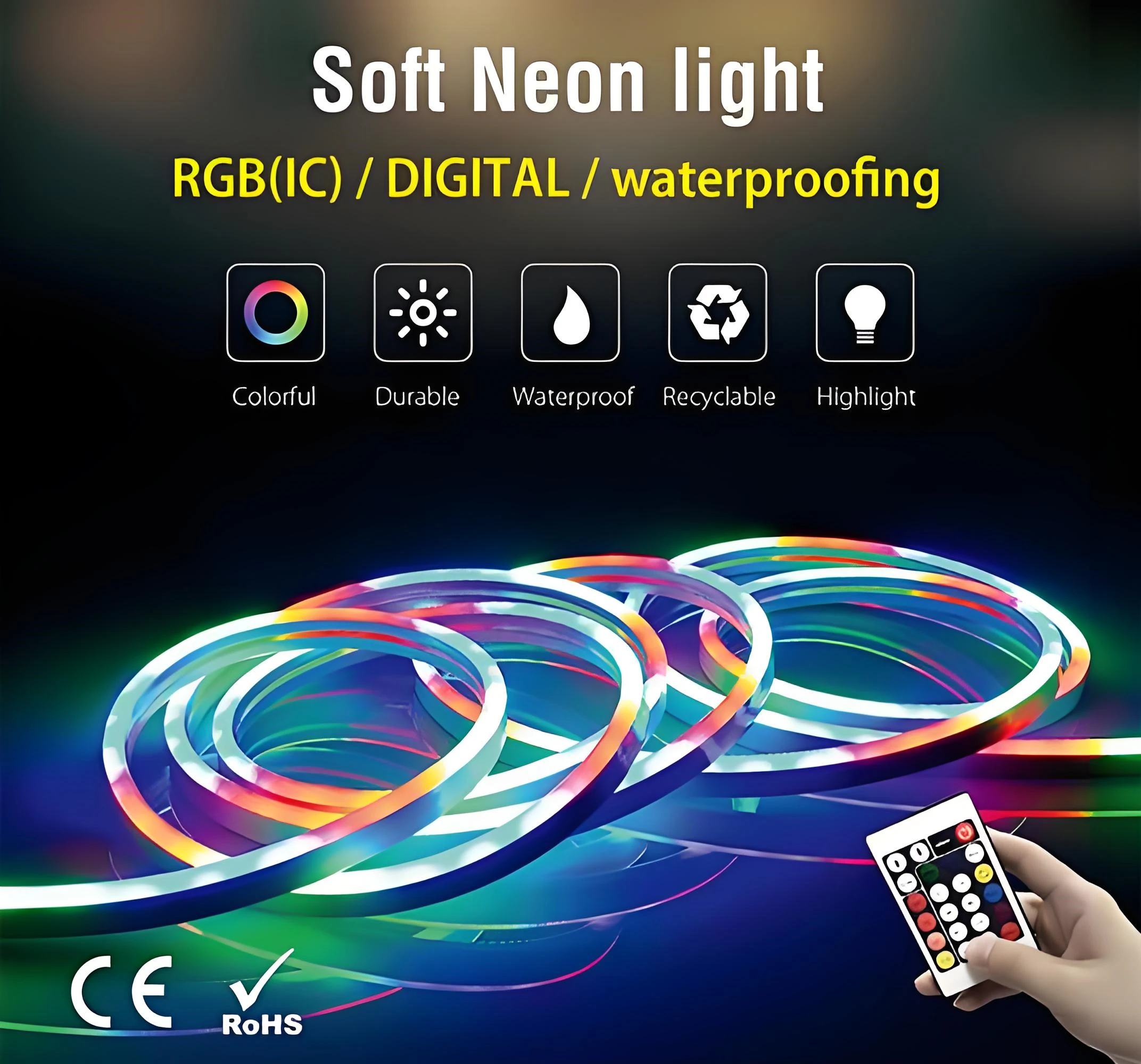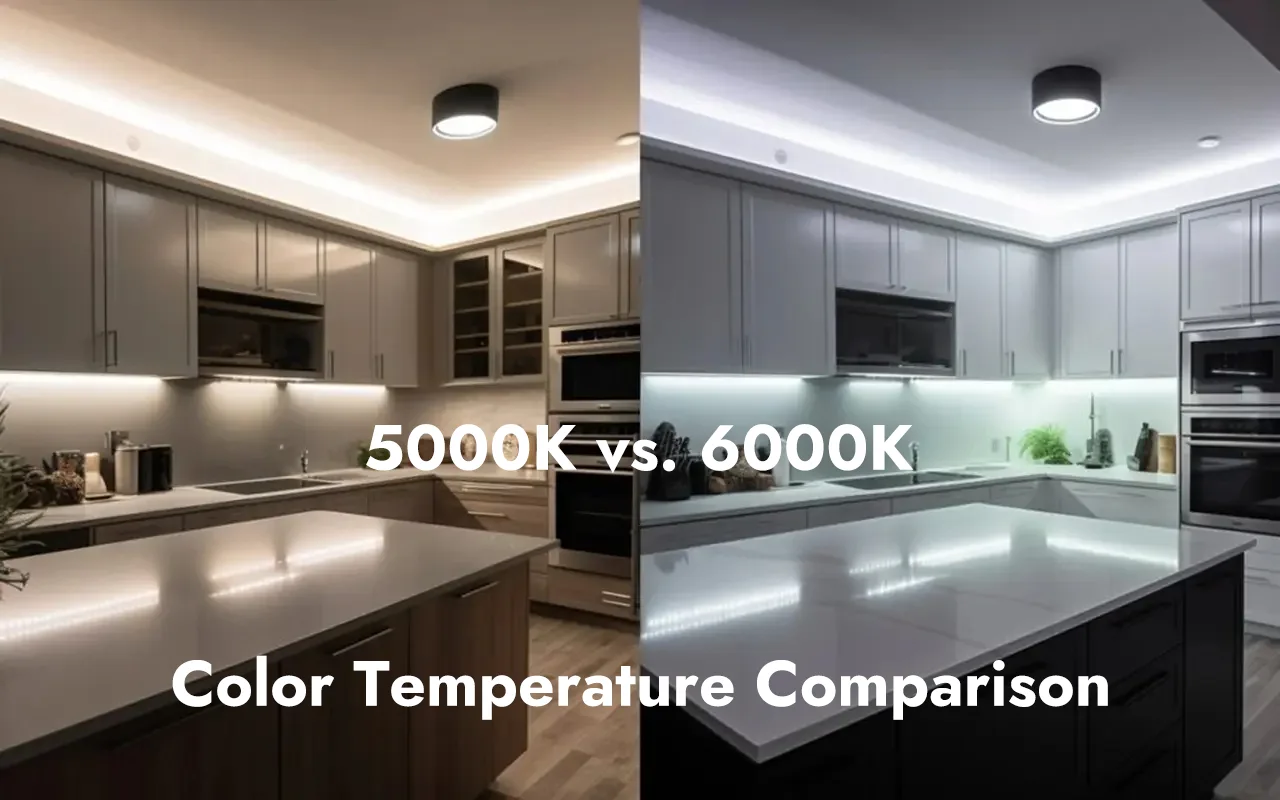
Color temperature is a parameter that describes the color of a visible light source and is measured in Kelvin (K). The specific value we are talking about, such as 5000K or 6000K, is actually the Correlated Color Temperature (CCT). Correlated Color Temperature (CCT) is used to describe the color of a light source whose spectral distribution is not identical to that of a blackbody emitter (a blackbody is a theoretical structure that completely absorbs all incident radiation and emits light based solely on its temperature). Generally, 2000K-2200K is warm yellow, 2700-3000K is warm white, or soft white; 3500-4000K is natural white; 5000K-6000K is cool white (daylight), and 6500K-8000K is cool white.
Color temperature determines the appearance, atmosphere, and function of a space. It not only affects our perception of color but also our mood and comfort. Different color temperatures can create different atmospheres and meet different functional needs. For example, warm yellow light in a bedroom creates a warm and cozy atmosphere that allows people to sleep comfortably, while a cooler color temperature in a study creates a bright and light feeling that allows people to focus. Mastering the nuances between different color temperatures is essential to fully utilizing their potential to create spaces with different atmospheres and uses.
With so many choices, buying LED lights can seem challenging. Whether you need cool, neutral, warm, or color-tunable LEDs depends on how you use them, where you want to install them, and the look and feel you want for your application. In this blog, we will discuss the difference between 5000K and 6000K, which are both defined as cool white temperatures. What are the subtle differences between them? Simply put, the main difference between the two color temperatures is their appearance. 5000K emits a balanced, neutral white light, while 6000K emits a cooler, bluer white light.
What is the color temperature in LED lighting?
The definition and measurement of color temperature is a measure that describes the appearance and color of light emitted by a light source. Color temperature is expressed in Kelvin (K) and is based on the concept of blackbody radiation. What is blackbody radiation? A blackbody is an ideal emitter and absorber of electromagnetic radiation. When a theoretical blackbody is heated, it emits visible light of different wavelengths. As the temperature increases, the color of the resulting light changes from red to yellow, then to white, and finally to blue.
The Kelvin scale is an absolute temperature scale used to define the color temperature of a light source. The scale starts at absolute zero (0 K) and increases with temperature. Lower Kelvin values (about 2700K to 3000K) correspond to a warmer yellowish-white light, often called “soft white light.” As the Kelvin value increases (about 4000K to 5000K), the light appears more neutral and balanced and is often called “cool white” or “daylight.” At higher Kelvin values (above 6000K), light appears bluish-white and is often referred to as “cool daylight” or “cool blue.”.
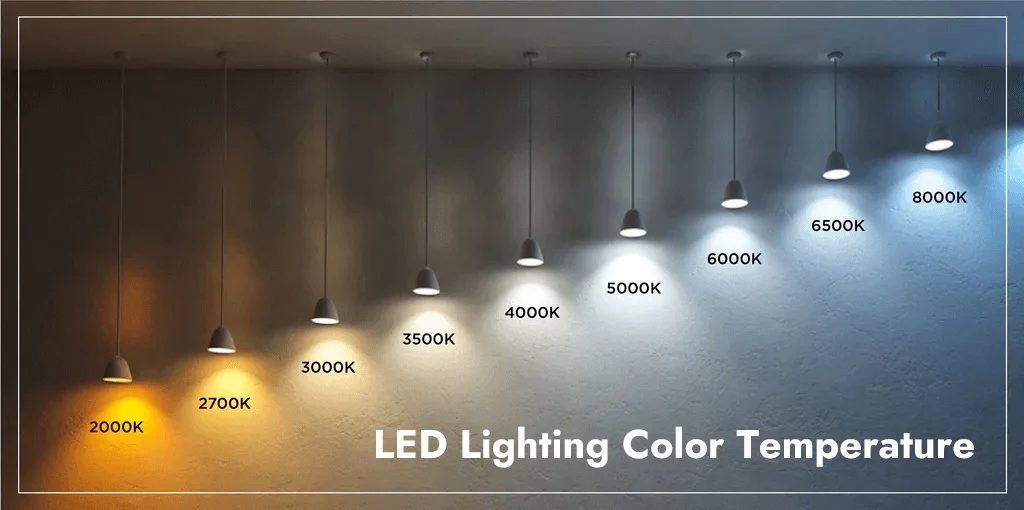
Color temperature is critical in LED lighting applications to create the desired ambiance, enhance visual comfort, and ensure optimal performance in a variety of environments. Different color temperatures evoke different emotional responses and affect the function of a space. By understanding the importance of color temperature, one can make informed decisions about choosing the right lighting solution for a particular application.
What is 5000K color temperature?
What is 5000K color temperature? 5000K light color is a more balanced, neutral, pure white, close to the horizon daylight. 5000K color temperature is defined as a cool white color temperature, which is part of the spectrum.
In the 5000K color temperature range, the brightness is bluish-white, and the contrast is comparable to sunlight and white light. 5000K can be called the natural white LED color temperature. This light is clear and bright. As bright light can produce strong color contrast, some small details can stand out in such light.
In practice, the luminous performance of LEDs is certainly not as good as that of natural sunlight. 5000K LEDs emit a pure white light that is softer than 6000K but still bright and clear. 5000K light, while still bright, is less intense than 6000K, but because of its neutral tone and balanced luminance, colors look more natural and accurate, which makes it ideal for a wide variety of environments and creates a pleasant ambience.
5000K color temperature is often associated with a balanced and comfortable atmosphere for a variety of applications. For example, it can provide comfortable brightness and natural color reproduction for residential and commercial spaces. And in office environments, 5000K LED lights can create an atmosphere of productivity and focus while minimizing eye strain. In commercial or retail lighting, 5000K color temperatures help display products accurately and attractively, creating an inviting shopping experience for customers. For outdoor environments such as parks, gardens, and sidewalks, 5000K LED lamps provide balanced and attractive lighting that enhances safety and aesthetics.
Pros and Cons
The advantages and disadvantages of color temperature are relative concepts related to personal preferences and environmental needs.
Pros
Natural and Fresh: 5000K color temperature is similar to horizontal daylight, creating a fresh and natural atmosphere.
Highly Versatile: 5000K LEDs are pure white, well-balanced light that can be used in residential lighting, outdoor lighting, commercial environments, or offices.
Calm and Comfortable: The pure white light emitted by 5000K LEDs simulates the feeling of horizontal daylight, which can calm the mind.
The beauty of 5000K light is that it has a different sensitivity to color at a lower color temperature than 6000K blue light and natural sunlight. If you don’t need a lot of natural light, then 5000K is the best lighting. When comparing 5000K to 6000K daylight, the 5000K LEDs are softer and more relaxing. Because of its reduced blue color, the 5000K looks more attractive and balanced. In fact, 5000K’s spectrum is quite balanced, with roughly the same number of wavelengths in each spectrum.
Cons
Eye Straining: The cool white light emitted by 5000K LED lights is more likely to strain the eyes than warm yellow light.
Loss of Concentration: 5000K color temperature light is more balanced, creating a more relaxed and natural atmosphere, and is not suitable for use in hospitals or workshops where high levels of concentration are required.
What is 6000K color temperature?
6000K LEDs emit a cool white light with a slightly bluish tint, similar to vertical daylight. This cool white color temperature is often associated with clarity, focus, and productivity. 6000K LEDs are bright and contrasty, providing focus and visibility enhancement.
6000K LED lighting emits a cool white light with a slightly bluish tint. As a result, 6000K LED lighting fixtures give a bright impression when it comes to visualization. This cool white color temperature is often associated with clarity, focus, and productivity. 6000K cool white light is bright and contrasty with focus and visibility enhancement. However, the brightness of light is determined by the number of lumens. 6000K LED lights can vary in brightness depending on the number of lumens. Therefore, whether a 6000K LED is “too bright” depends on the number of lumens.
The brightness and color of 6000K light can increase alertness and focus, making it ideal for spaces that require concentration and productivity. In the workplace, office, or garage, 6000K LED lights provide optimal brightness and visibility for tasks that require precision and attention to detail. Retail stores and showrooms can utilize 6000K LED lights to highlight products and create attractive, eye-catching displays. Many vehicle headlights use 6000K LEDs to improve visibility, safety, and the modern appearance of the roadway. For outdoor areas such as parking lots, building perimeters, and public spaces, 6000K LED lights provide precise, bright illumination that enhances security, deters potential intruders, and helps identify suspicious activity.
Pros and Cons
The pros and cons of color temperature are relative ideas based on personal preference and environmental requirements.
Pros
Enhanced Performance: 6000K color temperature is similar to vertical daylight, which can improve human attention, and is used in places that require high concentration, such as factories or hospitals.
High Definition: 6000k color temperature is white with a blue tint, which is a high definition color that reproduces colors and details.
Safety Lighting: 6000k LED lights are bright and clear and help improve safety when used in parking lots or outdoor walkways.
6000K is on the whiter side of brightness, but more on the cooler side of white temperature. Just like the sun, it won’t fade on a sunny day and is as comfortable as being exposed to the sun.
Cons
Glare: In a home or hotel environment where a cozy atmosphere is desired, the cool white light of 6000K may seem too harsh.
Rest Disturbance: While 6000K light can improve concentration, if exposed to such light for a long period of time, it can be mentally stimulating, which in turn can interfere with rest and sleep.
5000K vs. 6000K, what’s the difference?
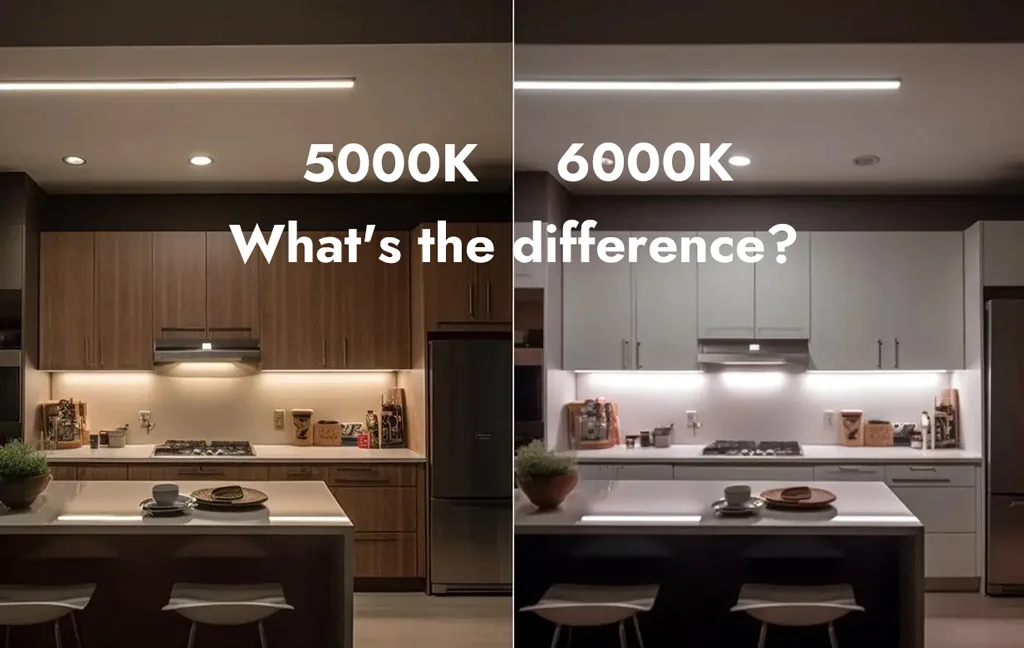
When comparing 5000K and 6000K LED lighting, understanding the difference between these two color temperatures is critical to choosing your specific needs. Below we’ll take a look at the points of difference between 5000k and 6000k LEDs, and you’ll have a better understanding.
1. Theoretical differences
First of all, the color temperature in 5000K or more is called “cold color” (blue). 5000K or more is slightly different; the 5000K and 6000K difference can be seen as relative to the “yellow” and “blue.” Relatively speaking, the LEDs are not the same as the color temperature.” In terms of, relatively speaking, the color of 5000K being lighter than 6000K light, 6000K color is lighter.
2. 5000K vs. 6000K comparison chart
5000K and 6000K are popular for users who want to upgrade their current lighting to brighter or higher color temperature levels. While these two colors look similar, comparing 5000K and 6000K will give you a better understanding of their specifications, differences, and the ways in which they may adversely affect your decision. See the table below.
| Item | 5000K LED Lighting | 6000K LED Lighting |
| Light Color | Pure white ( horizon daylight) | Cool white with blue tint (vertical daylight) |
| Brightness | Balanced brightness | High brightness |
| Ambiance | Neutral and inviting | Cold and harsh |
| Function | Lack of concentration | High concentration |
6000K lighting emits a cool white light with a blue tint, similar to vertical daylight. Daylight white is different from soft white because soft white is a warm white light, while daylight white is a cool white light. This characteristic of daylight 6000K LEDs creates a cold, sterile atmosphere, making 6000K LED lights suitable for hospitals and factories. 5000K light color is pure white, relatively soft and light, but also bright and clear. Therefore, this lighting characteristic is suitable for offices, retail stores, etc. The bright white color of 5000K not only allows people to focus on their work but also keeps the mood calm with its bright hue.
3. Which is brighter, 5000K or 6000K LEDs?
Which is brighter, 5000K or 6000K? As we can see from the comparison table above, 5000K LEDs emit a balanced, pure white light that is close to horizontal daylight, while 6000K lights emit a bright, cool white light that is close to vertical daylight. Therefore, visually, the 6000K LEDs emit a cooler light and appear brighter than the 5000K LEDs. To meet specific lighting needs, 6000K LED lumen output is typically higher than 5000K LEDs, so 6000K lamps are also brighter. However, some 5000K daylight LEDs actually have higher lumen counts than 6000K lamps, and sometimes they are brighter than 6000K LEDs. Overall, 6000K lighting is usually brighter than 5000K LEDs.
If you decide to replace your LED lights and want a certain color, It is important to understand that the color difference has more to do with style than brightness. While we may think that 6000K LEDs are brighter than 5000K LEDs, In fact, 5000K LEDs are just as bright as 6000K LEDs, so choosing one of these colors is a matter of personal taste.
4. Recognize the difference in color temperature charts
LED lamps have a color temperature range of 3000K to 6000K, which is generally used by most manufacturers of LED lamps for indoor installations. If you want to fully understand how Kelvin temperature affects light output, please refer to the color temperature chart below. If you want to better understand how it relates to light, please note the differences in the pictures.
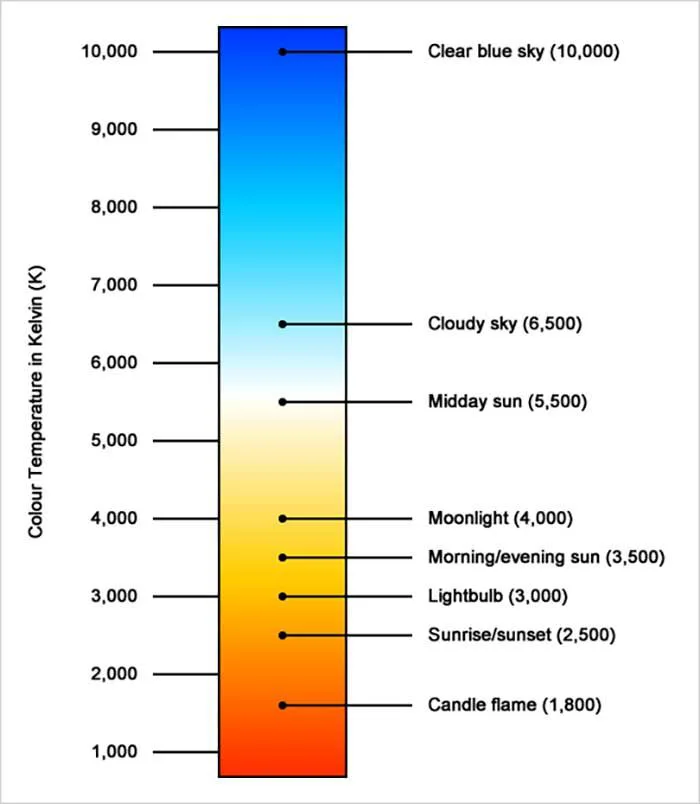

5000K and 6000K LED lighting, where is it used?
5000K LED lighting applications
While both 5000K and 6000K LED lights are at the cooler end of the color temperature spectrum, they each have different characteristics and applications.
5000K LED lights provide bright illumination to create a relaxing atmosphere in offices, outdoor parks, sidewalks, or kitchens and bathrooms in your home.
Supermarkets or Retail Stores: 5000K LED store lights emit a well-balanced, neutral white light that creates a relaxing, welcoming atmosphere that not only allows customers to see the details of the merchandise but also allows them to shop in a relaxed atmosphere.

Security Lighting: 5000K LED lighting fixtures emit bright, clear light and include AC LED strip lights, LED flood lights, and more for parks, sidewalks, porches, and gardens to provide safe and bright lighting.
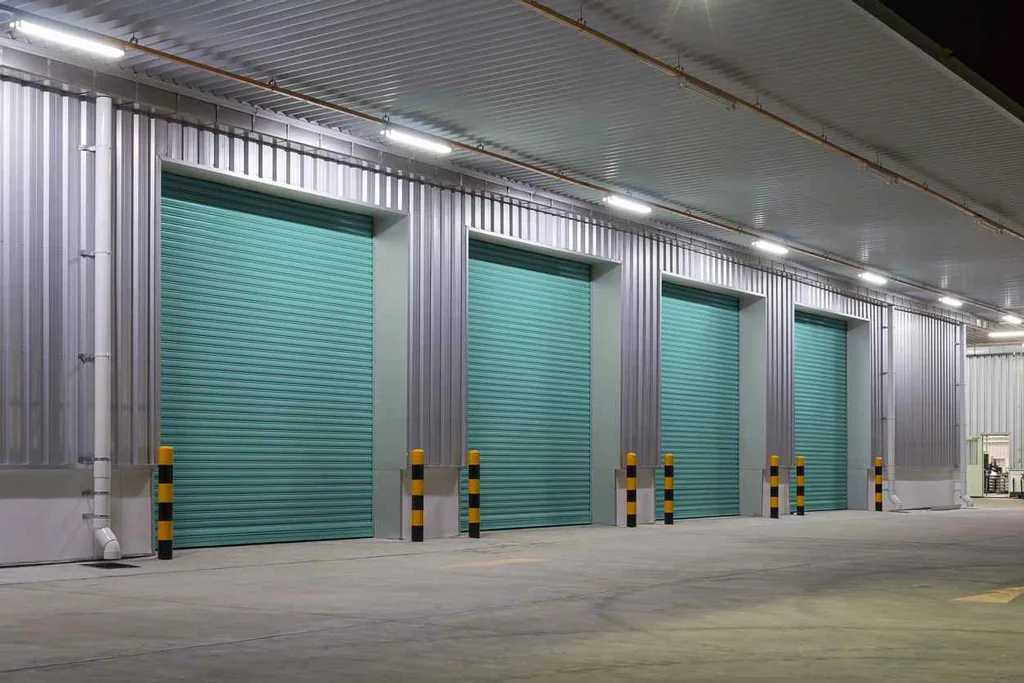
Office: The balanced brightness of 5000K LED lights, close to horizontal daylight, is relaxing and calming and helps to increase productivity.
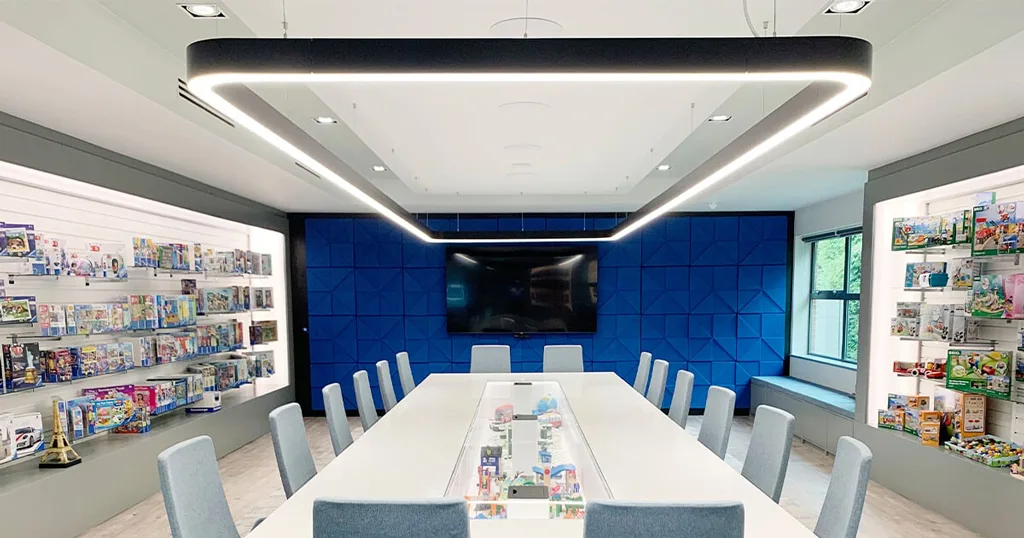
Residential Lighting: 5000K LED strip lights with neutral white light create a relaxing, cozy atmosphere suitable for use in kitchens or bathrooms in a home environment. In kitchens with light-colored countertops and white cabinets, 5000K lighting not only coordinates with the style of the kitchen but also helps to see the details of the food.
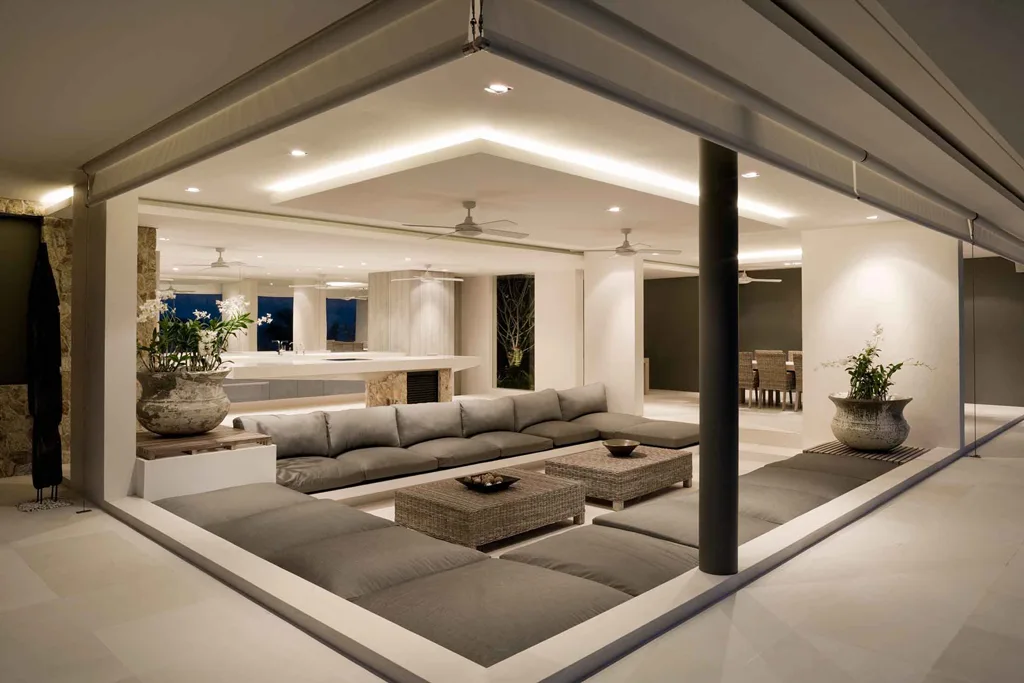
6000K LED lighting applications
Because 6000K LEDs have a cool white light color with a slight blue tint, similar to vertical daylight, and high color rendering, 6000K lighting is often used in environments where focus and clarity are desired.
Functional Lighting: In general, 6000K LED lights provide high contrast and clarity, while 5000K lights provide a more balanced light. For garages that require clarity and focus, 6000K LEDs are preferred over 5000K LED lamps. The color temperature of 6000K is a cool blue-white that helps people focus and work more efficiently, making it ideal for use in garages and studios where focus and clarity are needed. In addition, 6000K color lighting is often used in automotive headlights because it provides a crisp, cool white light.
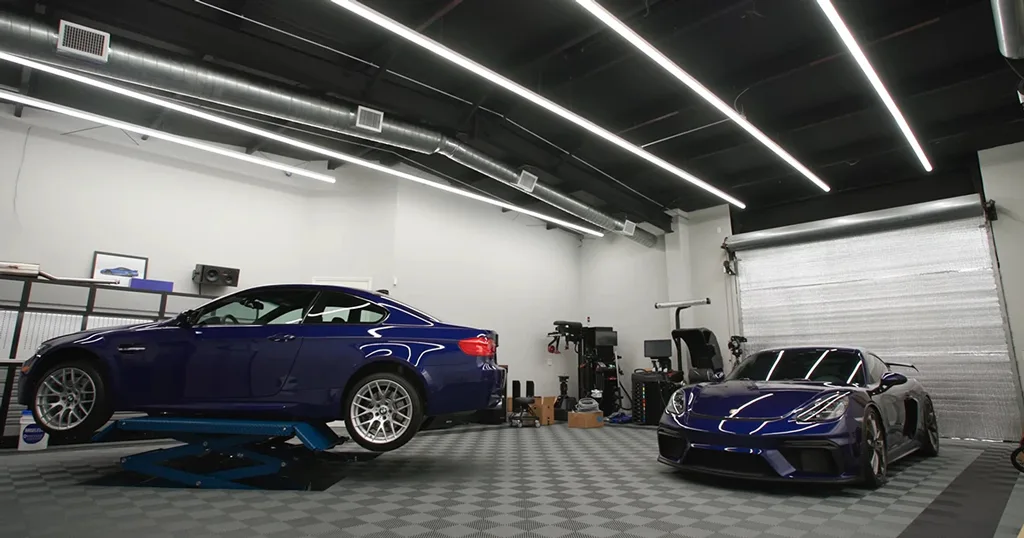
Spot Lighting: Color Rendering Index (CRI) is a measure of a light source’s ability to accurately render the color of an object. A light source with a high CRI can more accurately render the true color of an object. Color temperature and CRI are complementary. Maintaining a balance of color temperature and CRI creates a specific lighting effect. For example, high CRI daylight color temperature lighting is often required when displaying art paintings. High-CRI 6000K color temperature LED lamps are a good choice. 6000K color LEDs emit a cool white light with a bluish tint that highlights the textures and details of the merchandise on display, making 6000K lighting ideal for highlighting displays such as jewelry and artwork.
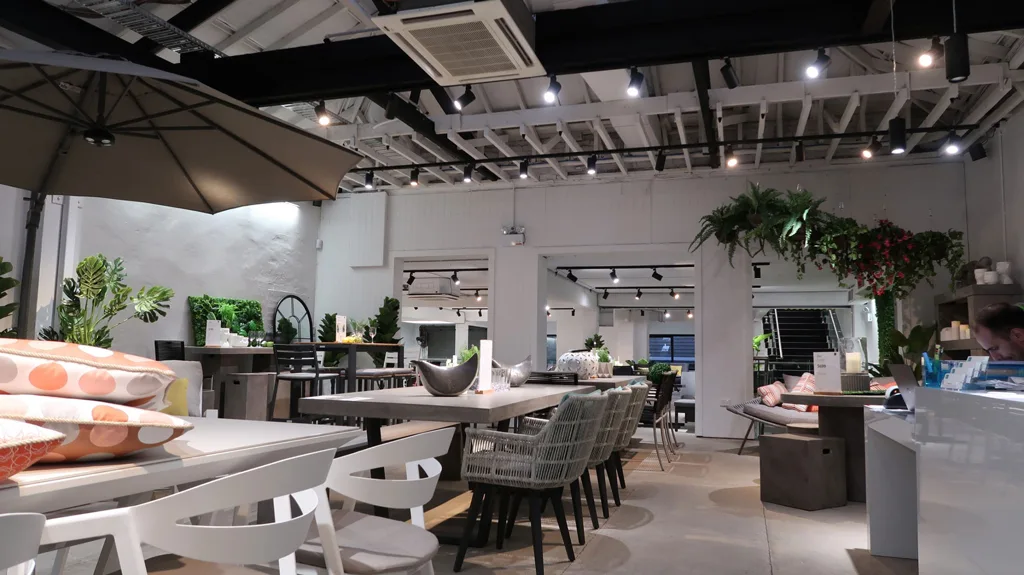
Industrial and Medical Lighting: Bright and high-contrast 6000K Daylight White LEDs can be used in factories or workshops, for example, to improve worker productivity. In addition, 6000K emits light with a blue tint, close to vertical daylight, which is calming and focusing, and can be used in healthcare settings such as hospitals and clinics to improve the concentration of healthcare workers.
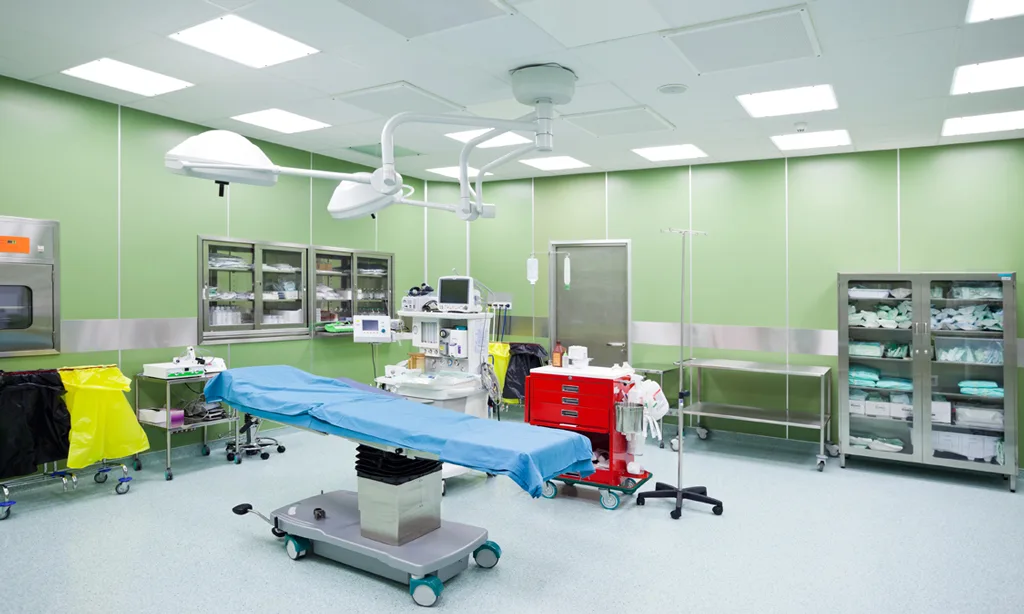
Photography and Professional Lighting: 6000K white light produces a light similar to vertical daylight, so it can be used for photography and other special lighting needs to help accurately display color and detail.
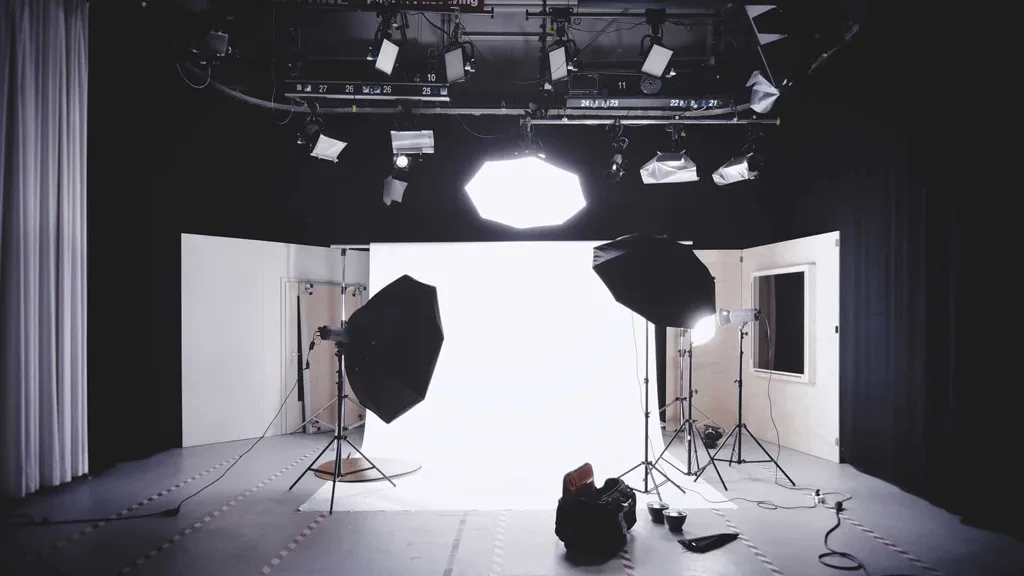
What do the different color temperatures mean?
Most LED light products are available in a variety of soft white colors. Their color temperatures range from 2700K to 6000K and are most easily described by the sunlight effect. The table below is a guide to lighting color temperatures.
| Color Temperature | Color | Color Details | Description |
| 2700K | Yellowish light with tint of orange | This is the average temperature of OE bulbs commonly used by many automakers. | A 2700 K bulb is much whiter than a 3000 K, and also has a bit of yellow and orange. A lot of car owners have decided to replace the LED, changing it to white. |
| 3000K | Yellow | This is the typical yellow bulb. | LED can emit soft white, warm white or yellowish light. This color temperature is best for places where you rest, such as your bedroom or living area. |
| 3500K | Very light yellow | This is a bright light yellowish color of bulbs. | These light yellow bulbs may appear yellow. They provide descent on-road visibility at night, yet they may appear somewhat old-fashioned. This is the main reason why the car owners decide to replace them. |
| 4000K | Yellowish white | This is a typical color of factory HID bulbs. | This color is emitted by the majority of average OE HID bulbs. This is a white light with yellowish tint. It does not have that cool shade and does not look blueish. |
| 5000K | Natural white | This light color can be compared to the sunlight at noon. | LED bulbs produce bright daylight colors. Natural white LED color looks neutral to warm, and does not have that shade of blue. |
| 6000K | Cool white | This color falls between white and blue on the graph, creating cool white light. | Cool white LED provide good on-road visibility, while that blueish shade provides that exotic aftermarket looks. There is slight difference between 5000K, 5500K and 6000K LED. It gets more noticeable when these lights are compared next to each other. |
What is the optimal color temperature for home lighting?
In the home, color temperature can significantly affect ambiance and mood. The optimal color temperature for home lighting depends on specific room functions, personal preferences, and lighting ambiance needs.
Ideal Color Temperature for Living Rooms
Creates a mesmerizingly comfortable environment that is also great for relaxing and entertaining. Using dimmers can also help you create the right ambiance when watching TV or movies. Recommended Color Temperature: 2700~3000K or 2700K to 6500K CCT adjustable color temperature.
- Bathroom Light Color Temperature
We want our bathroom spaces to be cooler and brighter so we can do everyday things like applying makeup and shaving. Using a dimmer can easily transform a clean and fresh environment into a more comfortable one. Recommended color temperature: 4000~5000K.
- Bedroom Light Color Temperature
The bedroom is the most private place in your home. We recommend a soft indoor light and a soft atmosphere to allow you to fully relax and rest. Suggested color temperature: 2700-3000K.
- Dining Room Color Temperature
You need a bright, attractive light so you can see what you’re eating. We recommend dimming the lights to regulate your mood. Recommended color temperature: 2700K~3000K.
- Kitchen Color Temperature
Bright lights are great for cooking and reading recipes. However, due to the wide range of applications in the kitchen, color temperatures will vary. The best way to find out is to look at the decor and other lighting in the room. In any case, a “neutral” 4000K fail-safe white looks pretty good. Recommended color temperature: 4000K~5000K.
Conclusion
Ideally, our lighting changes throughout the day, just like sunlight. Taking all of this into account, we can choose the color temperature by selecting the location, where we use it, or our personal preference. 5000K lamps emit a pure white light, while 6000K LED lamps emit a cool white light with a subtle blue tint. Both color temperatures offer similar levels of brightness and energy efficiency, so the choice between 5000K and 6000K depends on the desired ambiance and functionality of the area. With our LED color temperature comparison, we’re confident you already know how to choose between 5000K and 6000K LED lights for yourself.
SignliteLED is a professional China LED lighting factory specializing in SMD LED Strip, COB LED Strip, and LED Flex Neon Strip. If you are interested in learning more or have any questions, please feel free to contact us. Our team is ready to help you choose the best LED lighting solution for your needs.
